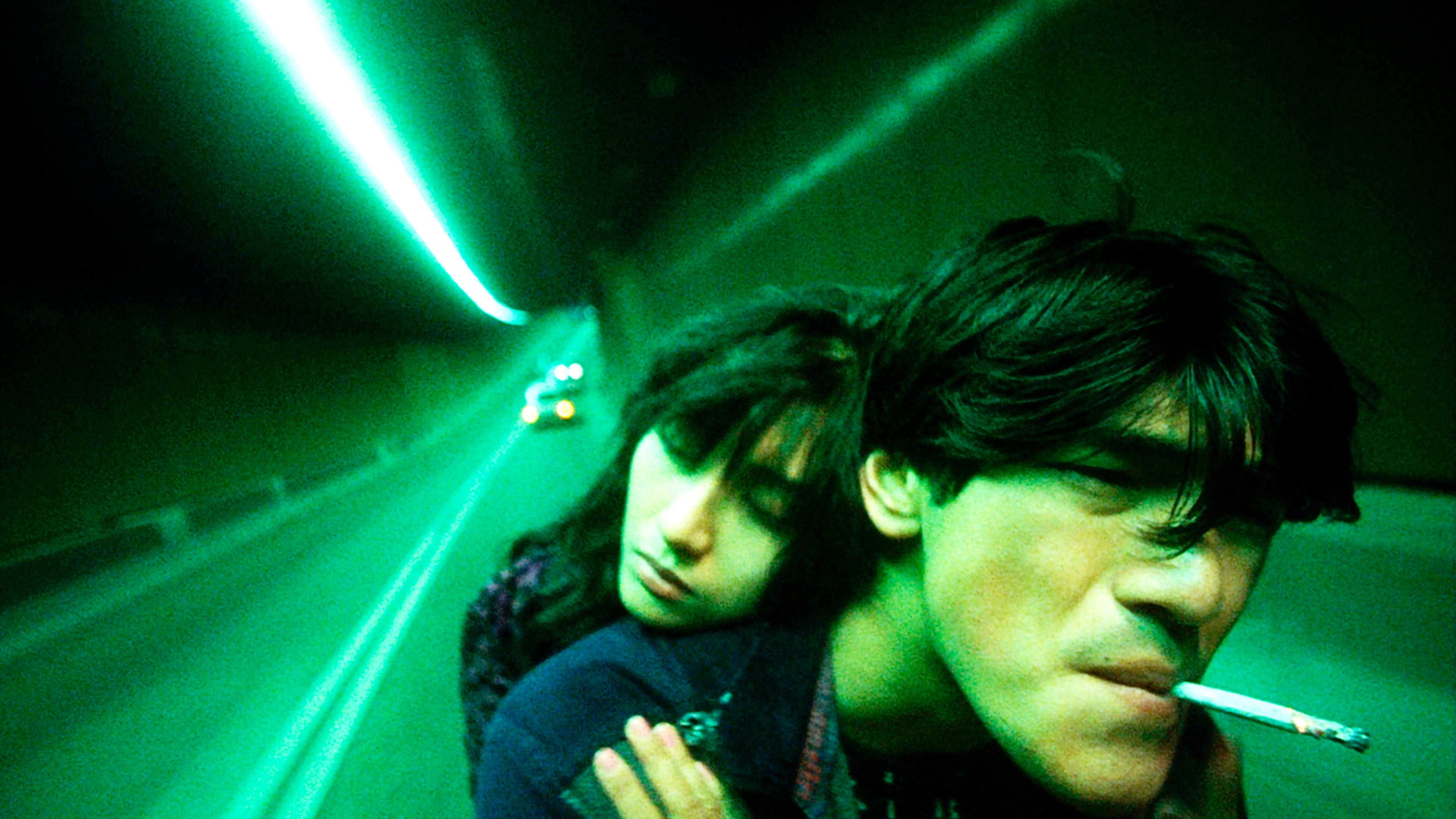
Fallen Angels
Wong Kar-Wai’s frenetic fever dream plunges into the pulsating world of nocturnal Hong Kong, where a hot-headed hitman and his emotionally entangled partner collide with a mysterious criminal converge. Intense color grading transforms the city into an unreal place, with halogen lights turning night into day. The dynamic editing and irregular timelines create an adventure in urban isolation, exploring the loneliness and search for identity of the protagonists. FALLEN ANGELS has had a profound impact on Hong Kong cinema, and with its eccentric imagery, sounds, and rhythms, it stands as a pinnacle of the postmodern urban fairy tale.
The green-tinged color grading in FALLEN ANGELS gives the contrasting visuals their distinct edge. Green, typically associated with balance and freshness, instead creates a sense of alienation here: skin tones appear sickly and unnatural, and the settings feel cold and distorted. This intensifies the emotional isolation of the characters, making them seem like aliens on another planet.
Supporting Film: There's Only One Sun
Wong Kar-Wai picks up on the futuristic mood of 2046 and deliberately forgoes a complex spy plot to promote Philips' new LCD technology Aurea. In his short film, he uses a palette of bright and high-contrast colors to highlight the image quality of the display. By combining his signature visual aesthetic with the depiction of technological innovation, a visually striking presentation unfolds that cleverly explores the boundaries between art and technology.

